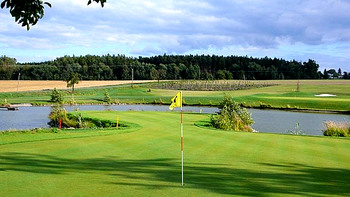A Look At Driver Shafts
When involving a swing one could have concerns with off-center contact. The off center impact is probably an outcome regarding the clubhead wriggling as a consequence of a torque and that in turn lessens accuracy as club face is normally no longer square to the player's foot position at impact. In the latest years, many designers have fabricated and marketed various low-torque shafts aimed at slimming the twisting from the clubhead at impact, however, these seem to be stiffer accompanying their length as well. Most recently, quite a few brands have already offered stiff-tip shafts. All of these shafts feature the exact same flex throughout the majority of the of the shaft, in order to generate the "whip" required to launch the ball efficiently, but also integrate a stiffer tip, in which cuts back tremendously on the sidewise torque striking on the head.
And finally, shafts are evaluated through their "kick point", which in turn is literally the point on the shaft exactly where the flex is actually the highest. They are undoubtedly ordinarily represented as "low-kick", "medium-kick" as well as "high-kick", yet the difference amid all of these is really merely a few centimeters. Low-kick shafts flex the most on a point nearer to the clubhead, which in turn brings about even less of the shaft to tighten and produces a greater launch angle. The more substantial the kickpoint, the much lower the kick off angle. As a result of kickpoint also offers an influence concerning how much of the shaft bends, it can easily be applied to adjust the shaft's ply so as to the player's distinct stroke rate.

Largely ignored as a segment of the club, the shaft is without a doubt believed by many to be undoubtedly the transmission concerning the cutting-edge clubhead. Shafts fluctuate in cost from a mere $20 to in excess $1050. Leading-edge graphite shafts weigh to a great extent lesser than their steel equivalents, (in some instances weighing lower than 50 grams for a driver shaft) letting in the interest of lighter clubs in which can easily be swung at more significant speed. During the last 10 years, productivity shafts have indeed been combined into the club making procedure.